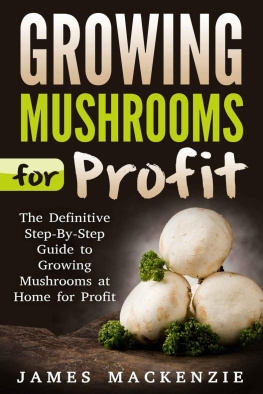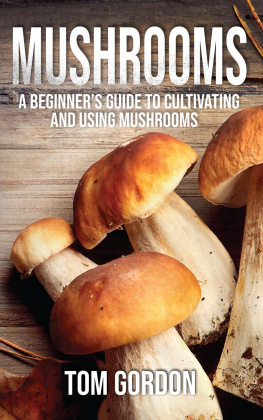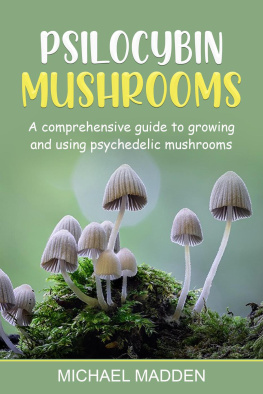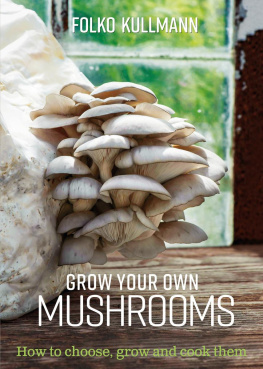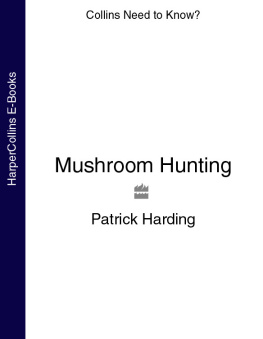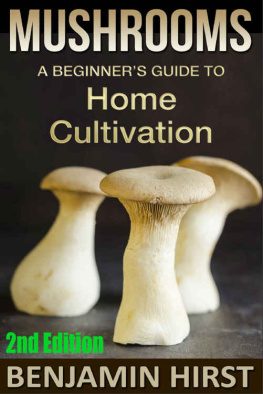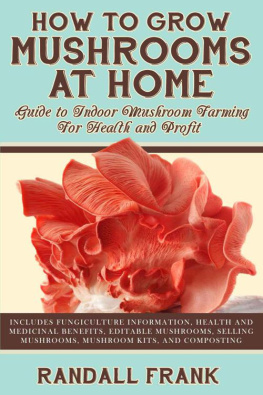Growing Mushrooms for Profit:
The Definitive Step-by-Step Guide to Growing Mushrooms at Home for Profit
Copyright 2017 by Keene Marketing - All rights reserved.
This book is geared towards providing exact and reliable information in regards to the topic and issue covered. The publication is sold with the idea that the publisher is not required to render qualified services. If advice is necessary, a practiced individual in the profession should be ordered.
In no way is it legal to reproduce, duplicate, or transmit any part of this book in either electronic means or in printed format. Recording of this publication is strictly prohibited and any storage of this book is not allowed unless with written permission from the publisher. All rights reserved.
The information provided herein is stated to be truthful and consistent, in that any liability, in terms of inattention or otherwise, by any usage or abuse of any policies, processes, or directions contained within is the solitary and utter responsibility of the recipient reader. Under no circumstances will any legal responsibility or blame be held against the publisher for any reparation, damages, or monetary loss due to the information herein, either directly or indirectly.
Respective authors own all copyrights not held by the publisher.
The information herein is offered for informational purposes solely, and is universal as so. The presentation of the information is without contract or any type of guarantee assurance.
The trademarks that are used are without any consent, and the publication of the trademark is without permission or backing by the trademark owner. All trademarks and brands within this book are for clarifying purposes only and are owned by the owners themselves, not affiliated with this book.
OTHER BOOKS BY JAMES MACKENZIE
Mushroom Recipes: Simple and Delicious Portobello Mushroom Recipes, Shiitake Mushroom Recipes, Oyster Mushroom Recipes and Mushroom Soup Recipes
READ ON AMAZON: http://bit.ly/mushroom-recipes

Contents
Introduction
As a firm supporter of local enterprise, I had an idea that I wanted to start producing home-grown goods. But not just any home-grown goods something everybody enjoys yet not farmed locally by many people.
I use organic produce when I can, so I thought to myself, why not grow mushrooms. I did not have a large space to cultivate rows and rows of vegetables so I looked at growing something that needed minimum space.
People have been consuming mushrooms for a long time and even the diminutive button mushroom has become a staple ingredient in the classic American pizza! I was drawn so much to the idea of cultivating mushrooms that I had to find out how to do it. Usually I visit friends and acquaintances first before I start reading any books.
The problem was, I didnt actually know anyone who knew how to cultivate mushrooms. I headed to my local library and I started poring over the available literature on mushroom cultivation.
I discovered a lot of surprising things about mushrooms. The more I read about growing mushrooms the more excited I became at the prospect of having my own mushroom enterprise.
It didnt take long before I was preparing the substrates needed for my mushroom farm and harvesting the first fruits of my hard work. You can do this too as long as you love what you are doing!
Mushroom farming can be a great source of income, but you have to understand the basic processes involved to make a success of it. Hopefully this book will help you in understanding those processes a little better.
What are Mushrooms ?
Mushrooms are one of the most widely consumed foods in the world. A large number of mushroom varieties are used in pharmaceutical and culinary settings around the world.
Several questions need to be answered:
- What is a mushroom?
- Why does it grow on old, rotting logs?
- Is the mushroom related to plants like oregano and water hyacinth?
When taxonomists first laid their eyes on mushrooms, they had a hard time classifying them, because they showcased both plant-like and animal-like characteristics. In the old classification system, the mushroom was described as being more plant-like. Today, we now know that mushrooms belong neither to the Plant Kingdom or the Animal Kingdom.
Rather, these ubiquitous fruiting bodies are produced by species from the Kingdom Fungi . Yes, mushrooms are related to the annoying stuff that grows in between the bathroom tiles. And yes, not all mushrooms are pleasant to the taste (or even edible).
This is one of the biggest reasons why you should never attempt to cultivate mushrooms on your own without having a reliable guide, because you could end up spending a lot of cash without producing the mushrooms or cultivating the wrong type of mushroom.
Now, the mushrooms that we actually use when we cook risotto or pizza are actually the fruiting body of the fungi. The fruiting bodys main function is to ensure the survival of the next generation of fungi.
A mushroom develops from a very small point on the surface of the substrate or growing medium. This tiny point (which is usually only two millimeters or less in measurement) is called the primordium.
If we were to liken the mushroom to a regular plant, then the primordium is like the sprouting seed of the mushroom. Take note, however, that fungi creates a massive network of roots underneath the substrate.
So, the part of the fungi that you see on the substrate is just the fruiting body. So even if you pull out the fruiting body, fungi will still thrive in the same spot, because the underground root network of the fungi is untouched.
It is common to see clumps of mushrooms growing together in a very small area. The reason for this clumping is that buttons, or primordiums, tend to sprout near developing mushrooms. So if you look for mushrooms in the wild, chances are you will see wild clumps that showcase mushrooms in varying stages of development!
The umbrella-like structure is formed by the mycelium. The mycelium is the component of fungi that is capable of producing fruiting bodies. This component in turn, is composed of a massive amount of hyphae. Hyphae are simply the individual threads or strands that compose the entirety of a fungus mycelium.
When a fungus primordium is ready to be transformed into a fruiting body (a mushroom), hyphae begin to bunch together and move upward from the substrate. Early in a mushrooms development, the primordium looks like an uneven egg surrounded by a thick mass of threads (the hyphae). Over time, the dome of the egg begins to grow in size.
The hyphae veil surrounding the dome of the growing mushroom will eventually expand and rupture when the time is right. When the veil protecting the growing mushroom disintegrates, it usually becomes a part of the fruiting body.
Sometimes, the hyphae veil becomes a small, cup-like appendage on the base of the fruiting body. So, when you see some irregularities near the base of a mushroom, you know what they are.
It should be noted that not every species of mushrooms will produce a thick hyphae veil/universal veil. Some species only produce a thin layer of hyphae that looks a lot like a spiders web. Mushrooms are able to expand the area covered by the fungus by releasing spores from its cap.
Taxonomists and mushroom enthusiasts are further able to study wild mushrooms by studying the individual spore prints of specific fungi.
Try this little experiment when you find a wild mushroom growing near your home: don a pair of sterile gloves and cut the cap of the mushroom making sure that the gills or ribs under the cap remain undamaged and undisturbed.

